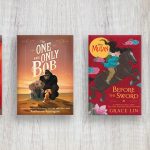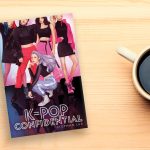There are many obvious connections between STEM and making, but as Dr. John Spencer writes in one of his blog posts, “Too often, we associate makerspaces with STEM classes. People think about coding or robotics or 3D prototyping.” He goes on to explain, “When students create blogs, podcasts, and documentaries, they are exercising a maker mindset.”1
At the National Maker Faire in 2016, Adam Savage emphasized that making is inclusive of all creative pursuits:
“What is making? It…is a new term for an old thing. And let me be really clear, making is not simply 3D printing, Arduino, Raspberry Pi, LEDs, robots, laser and vinyl cutters. It’s not simply carpentry and welding and sculpting and duct tape and drones. It is also writing and dance and filmmaking and singing and photography and [costume play]. Every single time you make something from you that didn’t exist in the world, you are making.”2
What I like about both of the above explanations of making is that they emphasize the creation of something new, rather than the tools used or the product made. Making is much more than just high-tech engineering tools, although those can be helpful. Technology is an imperative part of our future, but it is not the only element (and I would argue it is also not the most crucial element).
Making is also not simply about the product made; it is the messy, failing-forward process used to create and teach our students resilience. The product becomes a bonus to the discoveries and learning that happen throughout the process of making.
Although the connections may not be as clear at first glance, there are many ways to weave making and literacy together for more engaged and deeper learning.
Literacy and Making
Our future requires problem solvers, critical thinkers, collaborators, and innovators. We need our students to be able to leverage technology, in new and improved ways, to make the world better. I believe that you can’t teach students those skills without literacy. Whether it’s reading research during the making process, using language to communicate steps taken, listening to others’ ideas, or writing to reflect on what students learned, literacy is a part of the making practice. Furthermore, Jacie Maslyk (Remaking Literacy) says that when we intentionally tie making and literacy together, we can increase student comprehension of text and “equip students with future-ready skills like creativity, collaboration, critical thinking, and communication skills.”3
Not every student would say they enjoy reading. However, every student has interests, and we can use those as a starting point for practicing literacy skills. As Maslyk writes, “We can create pathways that include students who don’t love reading in literacy learning in different and inviting ways.”4 That pathway starts with student creation through hands-on experience.
Maslyk also states, “Making provides the ultimate authentic audiences for speaking, listening, and writing. Students become the experts when they explain design, processes, and decisions. Students are empowered when they are the facilitators of their own learning. Shouldn’t this be our mission–to equip our young learners and empower them to go out into the world with confidence and direction?”5
Below are a few examples of ways to weave maker education into literacy in order to engage students and create learning experiences they will remember. My hope is that they might spark an idea for you so you can start, or continue, teaching literacy in making.
Making and Literacy Ideas:
Note: although the activities have been separated by grade bands, know that each idea can be modified for any grade level.
Elementary:
- Word Work: Have students spell their name (or a vocabulary word) using objects from their home or materials around the classroom. Having students take pictures, record a short video, or explain in-person what objects they used could allow for deeper learning.
- Invention Engineering: For a more long-term project, have students brainstorm something that might help people or animals. Problems could originate from characters in a story they are reading, or they could come from inquiry research done throughout the school year. Then, give students time to create a solution to the problem. Many literacy skills could be targeted throughout this process including reading, writing, speaking and listening standards.
Middle School:
- Book Trailer: Have students write a script and work through the writing process to give a very brief preview of the plot that “sells” the book. They could create the visual parts of the book trailer in an infinite number of creative ways including stop-motion animation, drawing/comic creation, acting out the scenes themselves, or another method. They can then record the content and edit it before sharing it with an authentic audience. This will also garner excitement for creating a reading culture in your classroom or school library.
- Setting a Scene: Have students engineer a setting for a novel they have read. To target standards, make sure they include details that were explicitly described in the text.
High School:
- Character Interviews: Give students the opportunity to “interview a character” from a novel they are reading. There could be many added layers to this project depending on the time you want to dedicate to this and the standards you want to cover. You could focus on writing by having them work through script creation and cover some reading standards by having them focus on finding evidence from the book to infer how characters would respond to specific questions. Could there be costume making? Set making? Could this be recorded, edited, and shared or presented? There are numerous ways to weave making and literacy with a project like this.
Resources
1 Spencer, John. “Why Every Classroom Should Be a Makerspace.” November 30, 2020. http://www.spencerauthor.com/.
2 Savage, Adam. “Adam Savage’s Maker Faire 2016 Talk!” Edited by Joey Fameli. Tested, October 17, 2020. https://www.tested.com/making/572490-adam-savages-maker-faire-2016-talk/.
3 Maslyk, Jacie. Remaking Literacy: Innovative Instructional Strategies for Maker Learning: Grades K-5. (Bloomington, IN: Solution Tree Press, 2020), 25-26.
4 Ibid., 23.
5 Ibid., 16.






